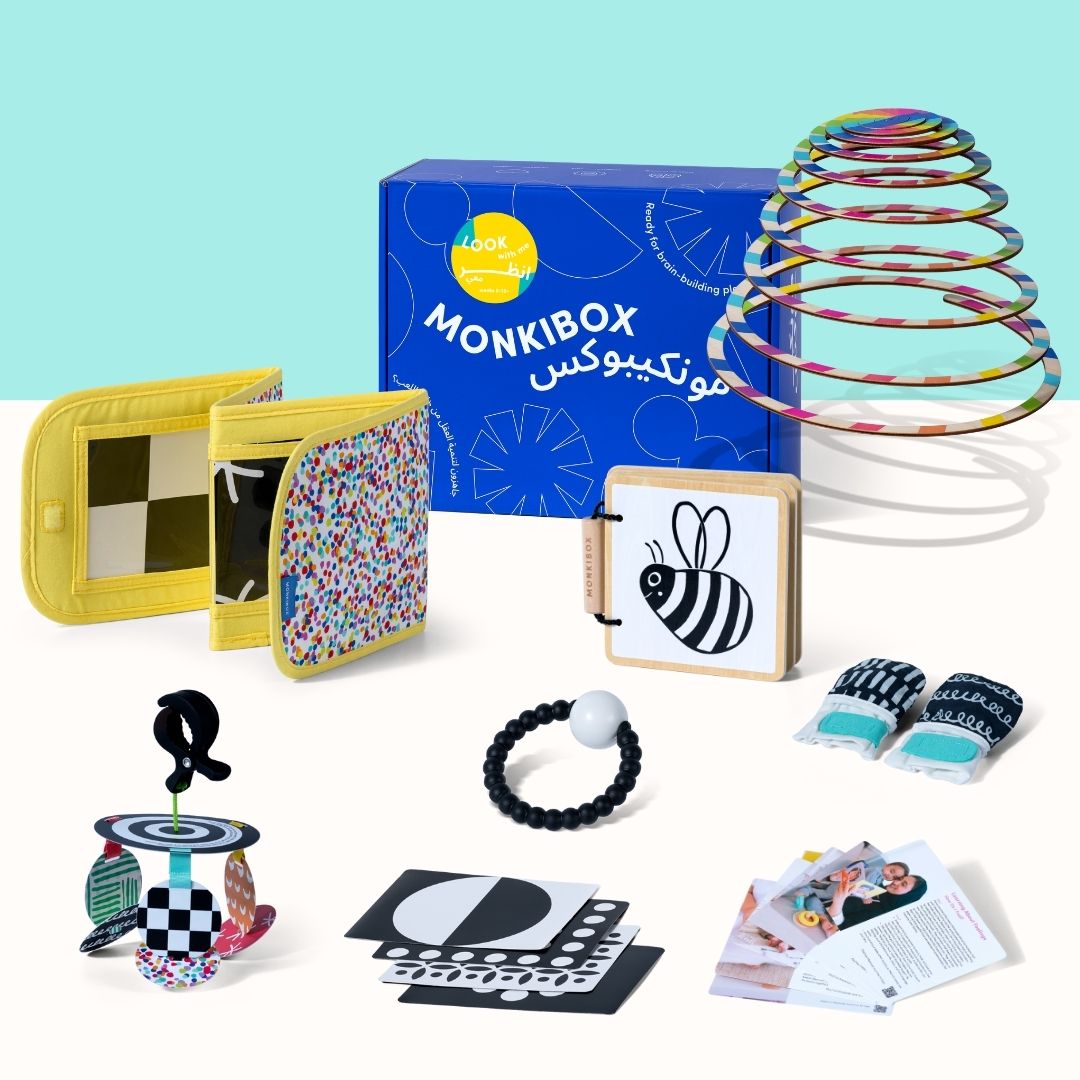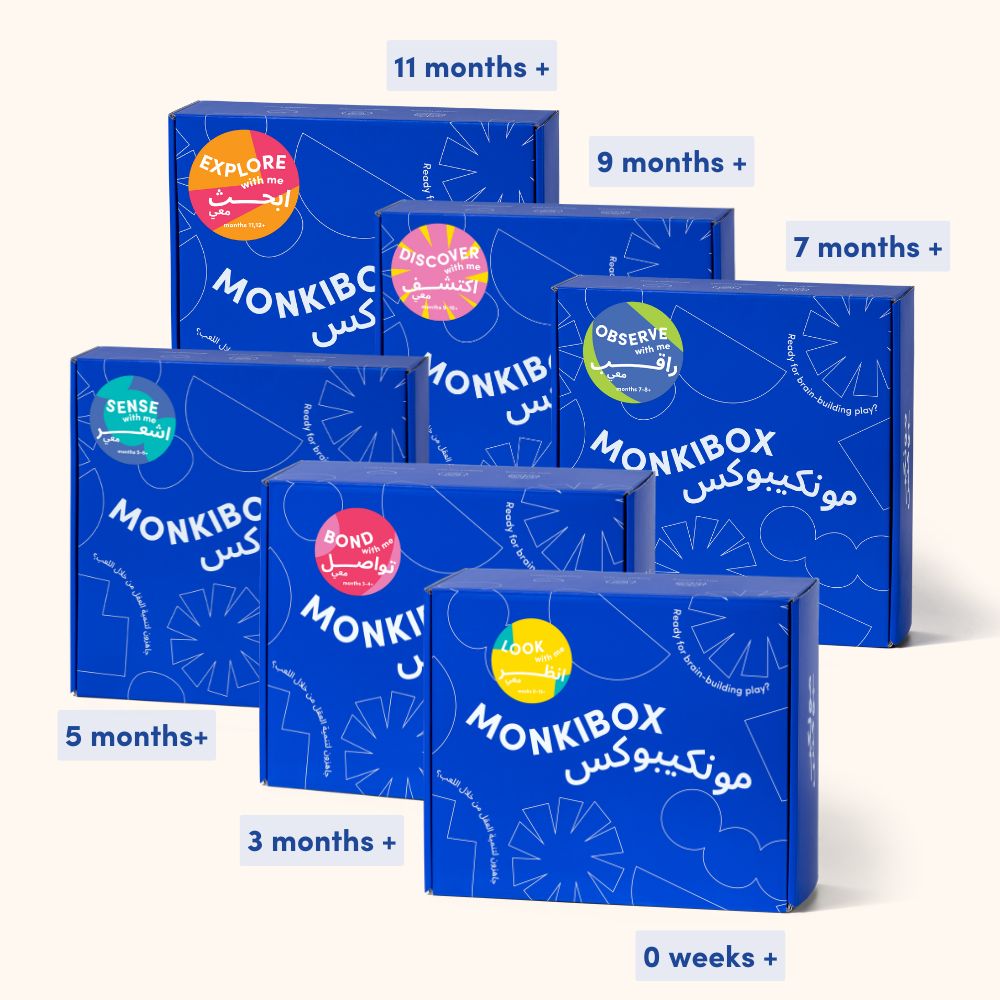Your baby’s small movements often lay the foundation for more challenging ones. Developing motor skills usually requires babies to master one before they move on to the next.
Two of these smaller but significant movements are reaching and grasping (fun fact, these actions are known as prehension). Reaching and grasping allows your baby to interact with the world around them on their terms.
Although babies are born with a palmer grasp reflex (involuntarily closing their hands when something touches their palms), accurate, voluntary reaching and grasping develop around four to five months of age.
Since reaching and grasping are critical for further motor development, it’s never too early to introduce your baby to some reaching and grasping challenges.
- Provide a variety of objects to reach for. Place them in a semi-circle in front of your baby - close enough to get to it, but far enough away so they can actively reach for it.
- Use objects that will stay still and others that will move when touched, like a ball.
- Offer toys that fit in one hand as well as bigger ones that require a two-handed grip. Help your baby hold on to bigger toys.
- Ensure you offer a variety of textures and shapes. Picking up a soft ball requires different skills than grasping a rattle.
- Ask your baby to give you a toy. Voluntarily releasing a toy is a skill that will develop much later (12-18 months), so start by placing their hand and the object on your palm so that they only have to let go.

- Treasure baskets filled with objects of different textures inside, e.g., wooden spoon, sponge, hairbrush, plastic necklace, silk scarf, cotton wool, will invite your baby to reach and grasp what piqued their interest.
- Create opportunities in which your baby can easily experience the joy of reaching and grasping a toy. Hanging it from a toy gym is an excellent way for them to practice reaching, batting at it, and eventually grasping it.
- As your baby gets older, give him plenty of opportunities to bear his weight on their hands by standing on all fours.
- Place objects of various textures, sizes, shapes, and weights in his hands. If he brings it to his mouth, let him. This is how he will learn more about the object and learn how to hold onto it.
- Encourage your baby to bring his hands together and grasp his own hands. This is also good practice for crossing their midline (the imaginary line that separates the left and right sides of your body).
Start the development journey with MonkiBox. Montessori-inspired toys designed to give your child the best start.
Featured Product

|
Bond With Me PlayBox Designed to help your baby work on their grasping, examining and explore as they gain social awareness. |







